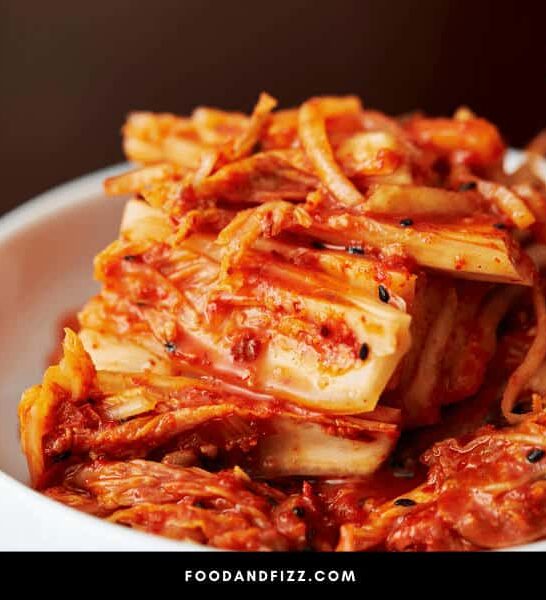Kimchi is a popular Korean side dish that is made by fermenting vegetables using a variety of spices. People often enjoy it as a side dish, but they may also use it as an ingredient to take advantage of its exciting flavors.
If you have a batch of kimchi stored at home, you may be surprised when you go to open it and see a strange, white substance.
What is that white substance and will it affect your kimchi? Discover the answers to those questions by reading on.
What Is This White, Non-fuzzy, Substance on My Kimchi?
The white substances that sometimes appear on top of your kimchi are white colonies formed by yeasts. Earlier research revealed that five different strains of yeast comprise those white colonies. Kimchi covered by those white colonies does not have to be discarded. Once the white colonies are removed, the kimchi can be washed, heated, and safely eaten.
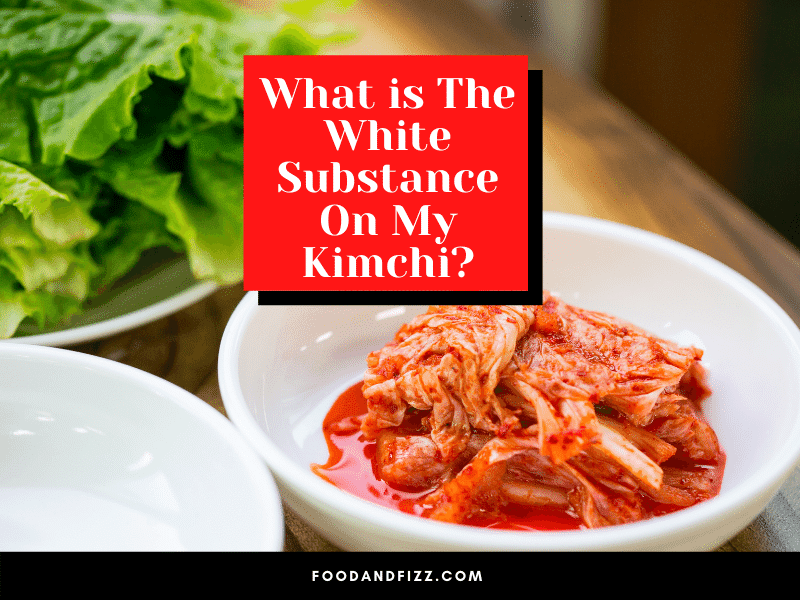
What Is the White Substance That Formed over My Kimchi?
The increasing popularity of Korean food has led to more people preparing dishes from that cuisine at home. Many fans of Korean food will even go so far as to ferment their own batches of kimchi.
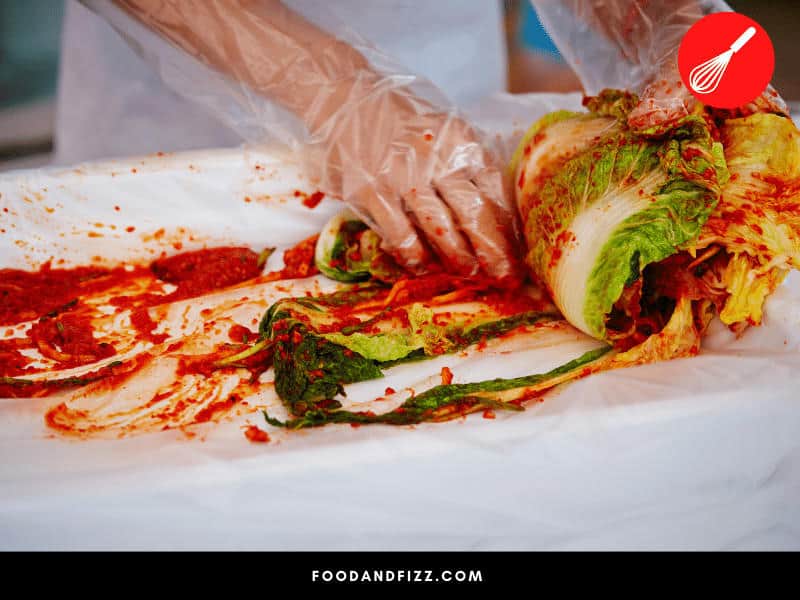
Fermenting kimchi at home is perfectly fine, but you may run into some unexpected developments while doing that. For instance, you may notice an unusual substance growing on your fermenting kimchi.
The substance, in question, is likely colored white. You’re almost certain that the substance is mold, but the lack of those fuzzy hairs is causing you to second-guess yourself.
So, if it’s not mold, what exactly are you looking at there?
Per this article from Phys.org, the World Institute of Kimchi has determined that those white colonies are yeast formations.
Researchers found that the aforementioned white colonies appear on top of kimchi during the later stages of fermentation. It’s similar to white colonies that may also form on rice wine, soybean paste, and soy sauce.
Upon taking a closer look at the white colonies, researchers also discovered that they are made up of five different yeast strains. The different yeast strains were identified after the researchers examined their microbial structures.
Is It Safe to Eat Kimchi Covered by a White Substance?
Now that we know what the white substance that appears on kimchi is, we can turn our attention to a different question. Can you eat kimchi if it is covered by that white substance?
Notably, none of the yeast strains observed in the white colonies have genes related to toxins. Researchers are still looking into how safe those yeast formations are for consumption, but they shouldn’t stop you from eating your kimchi.
You can still eat that batch of kimchi, but you will have to complete some extra steps to guarantee that it is safe.
First off, you should remove the white colonies. Use a spoon or whichever utensil you have available to skim the white substance.
With the white colonies removed, you can now wash your kimchi. Putting it under some cold water should suffice.
After washing, you can now heat up the kimchi. You can reheat the kimchi by putting it in a pan on low heat or by using your microwave oven.
Just remember to heat the kimchi up in batches so none of your reserve goes to waste. Keeping the heat low is also important if you want to avoid changing the flavor of the kimchi.
The kimchi is good to go after it has been reheated.
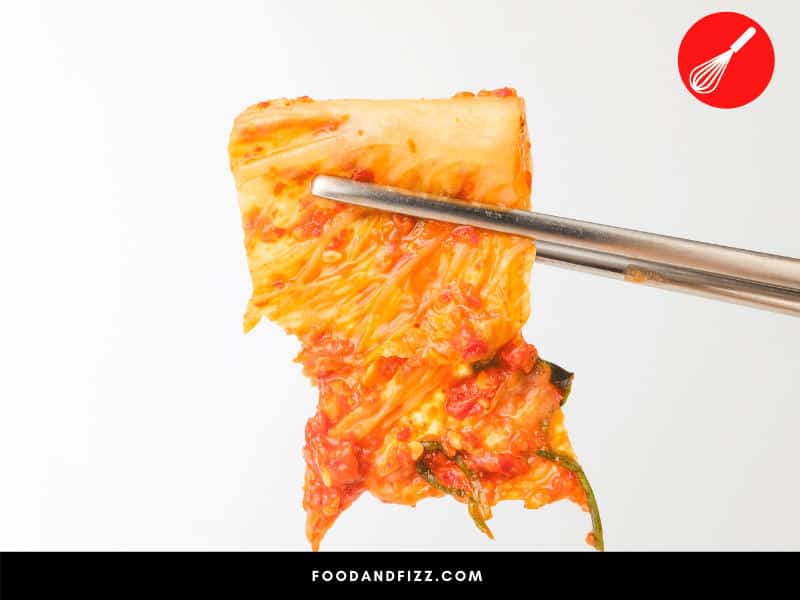
How Should You Store Kimchi?
Although the white substance that may appear on kimchi does not cause spoilage, you probably still want to prevent its formation. To do that, you need to store the kimchi properly.
Follow the steps below if you want to preserve the quality of your kimchi.
Step 1: Prepare a Container
Choosing the right container is crucial to maintaining the quality of your kimchi. The three types of containers most commonly used for storing kimchi are glass jars, airtight plastic containers, and airtight plastic bags.
Glass jars are preferred because the smell of the kimchi won’t stick to them, but using the other two is fine. However, you do need a container that is big enough to submerge your kimchi completely in the fermenting liquid.
Submerging the kimchi entirely prevents the growth of those white colonies. You should also sterilize the containers before using them to hold your kimchi.
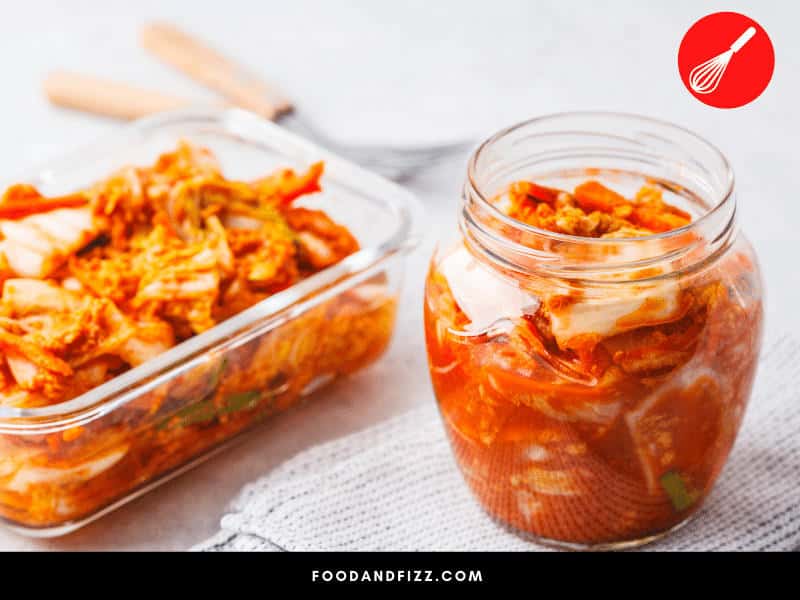
Step 2: Place the Kimchi in the Container
Next, you now have to transfer your kimchi to the container.
Grab a sterilized spoon and use that to carefully transfer the kimchi. You should also wear plastic gloves if you think you may accidentally touch the kimchi while transferring it.
Arrange the kimchi in your chosen container carefully. Remember to keep everything submerged before sealing the container.
Step 3: Store the Kimchi inside Your Refrigerator
The refrigerator is the best place to store your kimchi. Look for a spot in there where moisture won’t reach so you can be certain that your kimchi will be safe.
Adjusting the temperature of your refrigerator may also be necessary if you want to preserve the kimchi for as long as possible. Set the refrigerator’s temperature to 39 degrees Fahrenheit (4 degrees Celsius) so the kimchi can continue fermenting without any issues.
Kimchi can also be frozen, but you should avoid using a glass jar if you intend to do that.
Also, frozen kimchi develops new textures and flavors. They are not necessarily textures and flavors you may like so be mindful of that before freezing your kimchi.
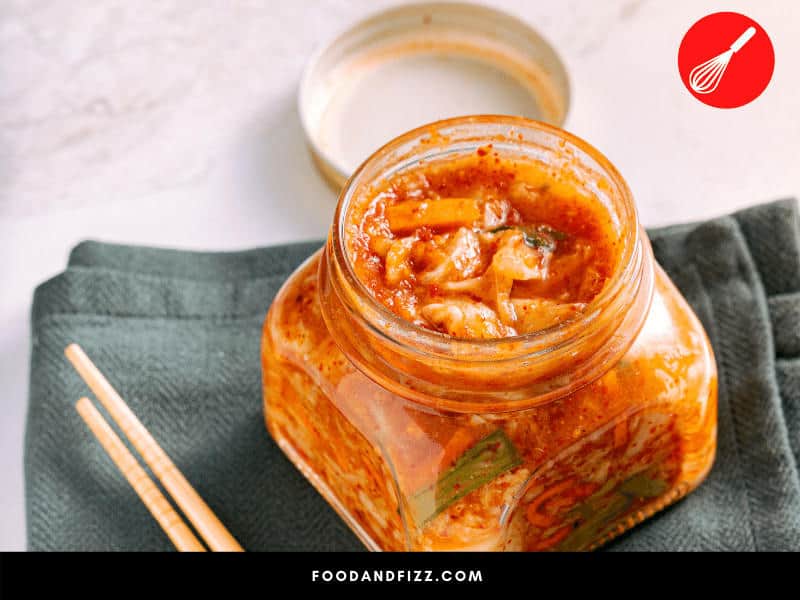
Conclusion to What Is the White Substance on My Kimchi
Don’t be so quick to throw out your kimchi if you notice that a strange substance has formed on it. After a bit of cleaning and heating, that batch of kimchi you worked so hard to make will still be perfectly safe to eat.
Frequently Asked Questions about What Is the White Substance on My Kimchi
How Long Can Kimchi Be Stored?
When stored in the refrigerator, a properly sealed container of kimchi can last for up to six months. Kimchi stored in the freezer can remain edible for several years.
What Are the Signs That Kimchi Has Gone Bad?
Spoiled kimchi will have an excessively sour and unpleasant taste. You may also find patches of mold growing on the kimchi if it is spoiled.

